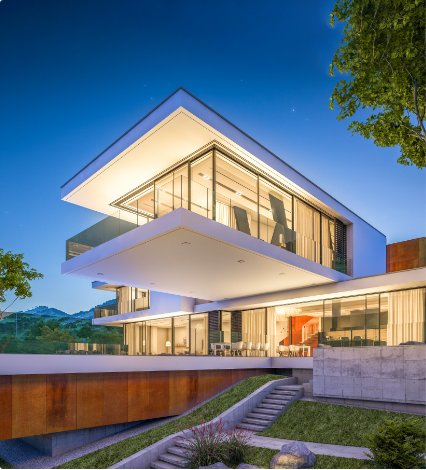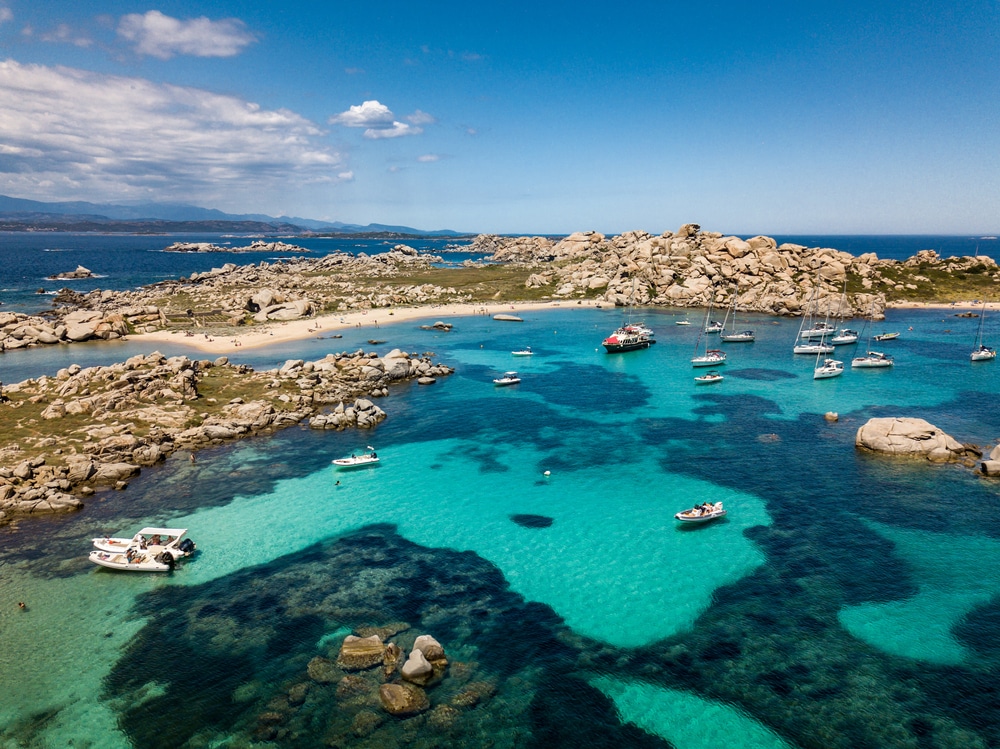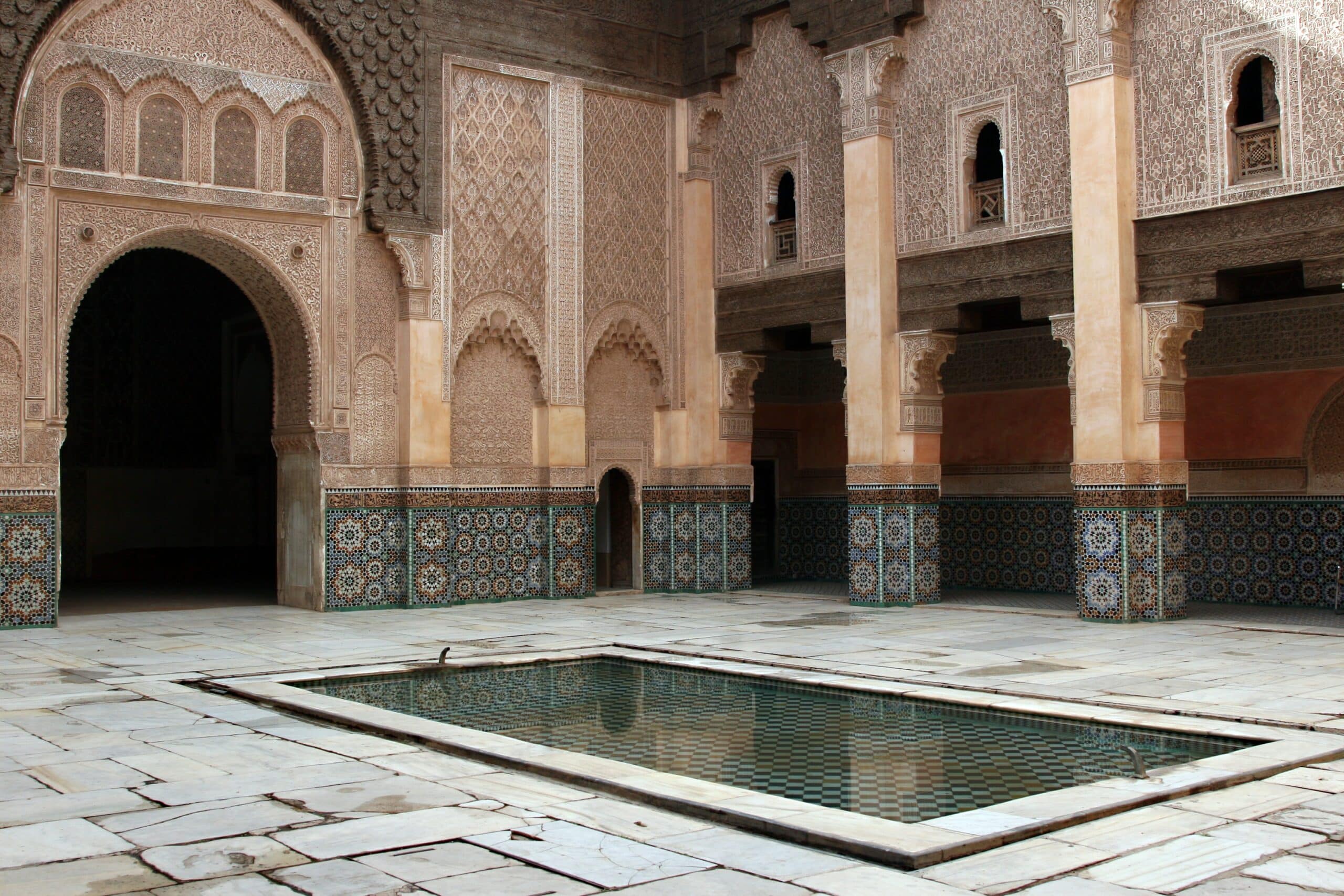Corsica is an epically beautiful island off the coast of France with centuries full of intriguing history. It is surrounded by delightful sandy beaches and mountainous hiking trails and is steeped in historical tales of times gone by. Officially a French island, tourists visiting will notice the Italian influence that remains here throughout the beautiful villages and towns.
In 1975, Corsica was divided into two “départements,” or regions called Haute Corse in the north and Corse de Sud in the south. However, they share territorial governance.
With exceptional vistas in every direction and plenty of fun things to do, travelers to the island rarely leave disappointed. Here is our travel guide for both regions of Corsica and their respective must-see destinations.
Haute Corse (The North)
The Perched Villages of Balagne

Europe has a wealth of history, and Corsica doesn’t disappoint when it comes to traditions and maintaining the impressive structures built hundreds of years previously.
As it is just a short drive from the bigger towns in Corsica, it’s worth the visit for the spectacular viewpoints, with narrow streets, local cafés, and quaint churches all set against an exceptional panoramic backdrop.
Balagne’s most beautiful villages are reachable by car, located just a 20-minute drive from Calvi.
- Moncale, the first village, treats visitors to a panoramic road that connects all villages, all offering something unique.
- Zilia is a village that produces spring water which is sold throughout the island, while Montemaggiore offers an exceptional view over Calvi Bay.
- Occi is an abandoned village offering a breathtaking vista of the mountains, Calvi Bay, and Revellata. Accessible by foot, from Lumio, or from the Panoramic Campsite on Lavatoggio Road, hikers can enjoy the rustic feel of the deserted village.
- Other notable villages in Balagne are Sant’Antonio, Pigna, Spelancato, Calenzana, and Lumio.
Travelers searching for an escape from the mundane pressures of modern life will love the charm and nature of the villages of Balagne, and the views give a sense of being in a unique part of the Mediterranean.
Sant’Antonino

Sitting at 500 meters above sea level is the ancient walled town of Sant’Antonino, providing breathtaking views of the Mediterranean water and countryside. One of the oldest villages in Corsica, with a Moorish heritage that dates back to the 9th century, Sant’Antonino is located in the must-see Balagne region, the northeastern part of Corsica.
Sant’Antonino is listed as one of the most beautiful villages in France, and its dramatic positioning on top of a hill has earned it the nickname of ‘Eagles Nest.’ With narrow streets and ancient traditional houses, it’s a medieval paradise of winding lanes waiting to be explored.
Travel seven kilometers from Sant’Antonino to find the Couvent Saint-Dominique de Corbara, sat between snow-peaked mountains and the ocean. A tranquil convent on a hillside with incredible vistas, it is open to the public for visits and relaxing spiritual retreats.
The Church of the Annunciation is another ancient attraction worth visiting, dating back to the 11th century. A noteworthy monument that has a tall bell tower and numerous 18th-century paintings. A small religious monument is the Lavasina Chapel, a traditional building perched on the Piazza Savelli Spinosi.
Bastia

Bastia is a picturesque yet vigorous seaside city, brimming with narrow streets and homes tightly squeezed together. The population here is around 50,000, which makes it the second-largest city in Corsica.
The sites here could keep you busy for more than a day. The Citadelle de Bastia, dating back to 1378, sits on a rocky spur to the south of the harbor and is worth a walk-through. Behind the old port are some quaint old streets that lead visitors to the Place du Marché, where a local farmers market can be found each morning.
In addition, socialites may enjoy Place St Nicolas as a fun location to bask in the welcoming atmosphere. It sits just north in the charming village Terra Vecchia, which surrounds the Old Port of Bastia.
Calvi

Located just a short 10-minute drive from the historic city center lies the stunning Calvi Beach with all the desirable conveniences.
This vast 6 kilometers of the uninterrupted French coastline is reachable by foot, car or the train of Balange från I’lle Rousse. A particularly beautiful beach due to its delightful Mediterranean scenery, powdery white sand, and neat line of grove trees.
There are many water sports activities to participate in, including windsurfing, kayaking, and sailing. Diving and snorkeling enthusiasts regularly enjoy this part of Corsica, and with numerous scuba diving schools, even if you haven’t tried before, it’s a great opportunity to hit these waves.
This typically warm Mediterranean setting features a bustling marina as well as a fantastic mountain backdrop, and Calvi is famous for its summertime jazz festival, which attracts top talent as well as eager visitors.
Amenities include rescue towers perched along the shore, a water transport rental center, and a diving school. There are cute picnic areas to enjoy, with parasol rentals if you’re feeling the burn, and during the high season, you will find a lifeguard.
From the comfort of your beach lounger, you can absorb the breathtaking views of the ancient Genoese Citadel above Calvi Bay.
Calvi Citadel

Calvi’s huge citadel was fortified by Corsica’s Genoese rulers post-12th century. With a harbor bustling with luxury yachts, top-notch restaurants lining the promenade, and quaint cobbled lanes, the picturesque Citadel certainly provides a prestigious yet historical ambiance. A relaxed stroll will soon become scenic when you reach the astounding vistas from the five bastions.
Previously home to the Genoese Governor and now used by the legendary Foreign Legion, Caserne Sampiero is a must-see when it comes to the historical landmark of Corsica.
Quai Landry is between the marina and the port, is blessed with lively bars and cafés, and is the perfect place to get to know the town. A luscious pine forest known as la Pinède stretches neatly along the six kilometers of the sandy beach which borders Calvi bay.
Stop by Chez Tao bar for chic cocktails after a day of wandering and absorbing the delights. Concerts are often held in Calvi Cathedral in the center of the citadel, and there is a tourist information office by the marina in the Citadel to discover what events are on while you’re visiting Calvi.
Chapelle de Notre Dame de la Serra

Not the easiest to reach, but a fine trek up to this hilltop chapel which overlooks Calvi, allows hikers to indulge in the most beautiful vistas. Chapelle de Notre Dame de la Serra has panoramic views at the top. It is a great place to relax and look out over the coastal town and turquoise waters and see the La Revellata lighthouse.
One of the most stunning landmarks here is the statue of Our Lady of the Serra, which is a static sentinel who stands with open arms to welcome every traveler who arrives on the Corsican island. An inspiring old legend tells us that if you come here with the love of your life, you are promised to spend long, happy years together.
A cemetery can be found in Lavezzo for the tragic loss of life that took place in the coastal town in 1855 when the frigate La Sémillante was wrecked due to hazardous reefs.
Corse du Sud (The South)
Plage de Palombaggia

Plage de Palombaggia is perched on the stunning south coast of Corsica, just eight miles and a 25-minute drive from Porto-Vecchio. Plage de Palombaggia is said by many to be one the most beautiful beaches on the island, and with good reason: it has been voted the best beach in France and one of the ten best beaches in all of Europe many times over.
The Mediterranean Sea on the southern part of the island is calm and clear and invites swimmers to enjoy a peaceful dip in the shallows of the lagoon-like ocean. The calm waters mean that children are safe to paddle, and lifeguards are present during the high season. This beach is well-known for its natural beauty and warm turquoise waters, and it also boasts phenomenal views of the Îles Cerbicales Nature Reserve.
Huge pink porphyry rocks are strewn across the soft, sandy shoreline, and if you prefer to be isolated, you can enter the beach at the left end, which is usually less crowded. A clear walking path connects the Plage de Palombaggia to the Plage de Tamaricciu. This beach typically offers a less crowded atmosphere, so there is always the option to explore further in this direction.
Amenities include numerous restaurants, bathrooms, showers, lounge chairs, parasols, boat rentals, and parking. The car park must be paid for and isn’t cheap, but unlike some other parts of Corsica, it is not necessary to hire a boat to arrive here, so the fee is well worth it.
Tip: The nearby town of Santa Giulia is also worth a side trip from Plage de Palombaggia. A bathing lagoon at the foot of a mountain that stretches with kilometers of white sand is a sight to behold.
Ajaccio

Ajaccio is the capital of Corsica and the birth town of Napoleon Bonaparte, making it a must-see spot on the Gulf of Ajaccio. With sweeping vistas of the western coast, stunning architecture, and an abundance of excellent food and wine, you’ll want to spend a full day here, if not longer.
The old town boasts pristine tree-lined boulevards, restaurants, bistros, cafés, and bars, all with a bustling vibe and patrons spilling out onto the sidewalk. A daily market in Place Foch is popular with locals and visitors alike, thanks to the French delights on offer.
On the southern tip of Ajaccio, you can find the sturdy walls of the 16th-century Genoese Citadel. Located centrally in Ajaccio is the Place de Gaulle, a grand square sporting an equestrian statue of Napoleon.
Maison Bonaparte, Napoleon’s ancestral home, is now a superb museum teeming with an exquisite display of portraits and memorabilia, as well as a gallery devoted to the French Emperor. The 16th-century Cathédrale d’Ajaccio, where Napoleon was baptized, is also well worth a visit to see the paintings of Delacroix and Tintoretto within.
Aiguilles de Bavella
Found along a mountain pass of the same name, Aiguilles de Bavella is a series of stunning red spikes of red granite that dominate the skyline. This spectacular feat of nature is just a 1.5-hour drive from Bonifacio and consists of sharp rocky spikes of red granite en route, so be prepared for an adventure.
The Col de Bavella is a winding road, taking visitors through mountains and valleys with breath-taking rustic scenery of Corsica, including cliffs and rocky needles, known as Aiguilles. Pine trees twisted by climatic conditions add character during this drive. Visitors flock to see the needles during the high season, and the views are divine, with grassy picnic areas to unwind at.
Climbing and canyoning can be enjoyed at Bavella Massif, where hikers will encounter the white marble statue of Notre Dame des Neige. It is a high-mountain spur of the GR20 hiking trail, which splits northwards toward Monte Incudine (2134m).
A red-marked trail that heads south takes visitors down a wide dirt road leading to the Trou de la Bombe. A hike of medium difficulty is found along the Purcaraccia River and takes visitors to the magnificent Purcaraccia waterfalls.
Lasting around 1.5 hours, this trail gifts walkers with breathtaking views of crystal-clear Mediterranean waters. And during the height of summer, it’s possible (and very necessary) to take a refreshing dip in the cool waters before continuing with the walk.
Bonifacio

Bonifacio is an ancient, well-preserved city situated in Southern Corsica. Being just a 30-minute drive from the Figari-Sud Corse Airport, it is the perfect starting point for your trip to Corsica if that’s where you flew into.
The tourist train that runs between the upper and lower towns makes it easier for anyone who doesn’t want to tackle the steep trek from one to the other.
Perched on a steep limestone cliff, the fortified old town boasts plenty of medieval French ambiance. With a lively marina and atmospheric clifftop citadel.
The ancient city of Bonifacio is situated in a 9th-century citadel and is made up of a maze of cobblestoned narrow streets and winding alleyways. Seemingly endless cafes and bars line the streets and piazzas, and there are plenty of boutique stores to pick up souvenirs.
Built-in the 12th and 13th centuries, Eglise Sainte-Marie-Majeure is a Romanesque church with fabulous Gothic elements that takes center stage in Bonifacio. It is a wonderful place to spend a few moments inside, admiring its beauty.
Bonifacio Citadel

Situated on the dazzling white limestone cliffs of the peninsula with a steep 70-meter drop, the Bonifacio Citadel certainly has a premium spot on Corsica. The city walls, built by the Genoese, remain strong after centuries, and it is possible to reach the canon positions which give a “bella vista” towards Sardinia.
The Kingdom of Aragon and Turkish corsairs ruled Bonifacio Citadel during the middle ages until the mid-16th century when the Genoese finally took control of the quarter. This harbor town lies in a maze of medieval lanes, each telling its own historical tales of a time when Bonifacio Citadel was used as a strategic location for Battle.
Townhouses scatter the old town, and the paved steps of Montée du Rastello and Montée St-Roch lead visitors from the marina to the previous gateway, the Porte de Gênes, boasting an original 16th-century drawbridge. A quaint museum now stands in place of the Bastion de l’Étendard, which was constructed to hold heavy artillery.
Heading to the west coast, beyond the Gothic Église Ste-Dominique, visitors will find a marine cemetery and, at the tip of the peninsula, a rock formation known as the Gouvernail de la Corse.
Lavezzi Islands

Located at the southernmost point of Metropolitan France, these (mostly) uninhabited granite islands sit close to the South coast of Corsica, reachable by boat from Bonifacio.
There are eight islands on the Archipelago of Lavezzi Islands. Lavezzu is the one to visit if you’re looking for clear turquoise water, white sandy beaches, hiking trails, and a historical touch.
Reaching Lavezzu Island is simple. It’s possible to take a boat trip or shuttle from the port of Bonifacio or even do a full-day cruise. If you’re ready for a more private adventure, you could always rent a boat from the port with a skipper.
Sailing boats and kayaks are also plentiful from Piantarella, and anchoring is permitted. Ecologically it offers a superbly wild environment and a concave-style coastline with granite boulders and reefs below the ocean’s surface.
The paths are there to be followed, and hikers are urged to check out the many attractions. It is worth seeing the ancient sheep pen, the Neolithic rocks, and the ruins of the Santa Maria chapel, which was responsible for welcoming monks between the 10th and 16th centuries.
Travelers impressed by wildlife will adore the nature reserve and observe the marine birds, as well as get to know the bottom of the seabed for those keen swimmers and snorkelers.
Tip: Piana Island is reachable on foot via a sandbank from Piantarella beach, which is opposite, and Cavallo remains the only one of the Lavezzi islands with inhabitants.
Sartène

Full of character, the medieval hilltop town of Sartène is known as a Ville d’Art et d’Histoire (City of Art and History) due to its optimal heritage.
There are plenty of attractions to be found in Sartène, including The Musée de Préhistoire Corse et d’Archéologie de Sartène, which reveals stories of the island’s ancient history.
Artwork produced during the Middle Ages and Ancient Roman archaeological findings are prominent here, and The Place du Maghju is a delightful hub of artisan boutiques.
Other must-see sights include the Eglise Santa-Maria-Assunta, and the former Palais des Gouverneurs Génois, which gives impressive views of the Vallée de Rizzanese. A pedestrian area around the church and town hall treats visitors to plenty of fabulous sights, with something new around every corner.
During spring, the town celebrates the Carnaval de Sartène. This carnival-style festival features an array of musical entertainment, parades, and masked balls. Also, an annual religious procession on Good Friday each year called the “Catenaccio” reenacts the events of the Passion of Christ, typically French and Italian traditions. The procession begins at the Eglise Sainte-Marie and ends at the altar of the Sainte-Marie church, and promises to be a popular event attracting all types of travelers.
Hot-spring fans will be pleased to learn that a pampering thermal bath facility is only 15 kilometers away from Sartène in the Domaine Rosa de Caldane. There is also a restaurant there serving typical delicious Corsican cuisine, which is perfect after a day of light indulgence.
Scandola Nature Reserve

Reachable only by boat or on a tricky mountainous path, the Scandola Nature Reserve was created in 1975. It is now declared a UNESCO World Heritage Site for its rich biodiversity.
Located on the Cape Girolata peninsula, the reserve spans approximately 900 hectares of land and 1000 hectares of sea. Meanwhile, obscure rock formations and caves emerge from the clear ocean in the Gulf of Girolata.
The beauty of Scandola is astounding, especially as the day goes on, as it becomes an ideal place to catch the sunset. The red Corsican rocks contrasting against the Mediterranean sea, and the jagged inlets along the coastline, truly produce some must-see scenes.
The reserve boasts a tremendous range of sea birds, including cormorants and giant gulls, allowing them to live and breed in a protected environment. Seal and dolphin colonies are well-established in Scandola, and Ospreys are slowly arriving in the coastal town due to conservationists and their strong efforts.
The 3-hour boat trip guided by the “The Colombo Line” from Calvi transports passengers to this rocky west coast part of the island. On a clear day, you’ll appreciate the rugged coastline and may be fortunate enough to cross some dolphins or sea eagles en route.
There are Endless Places to Explore in Corsica
Corsica is an island that has taken authority from both France and Italy, allowing it to give a diverse feeling that nowhere else in Europe has the privilege of offering. For short or long breaks, there will always be something to keep visitors of all types entertained.













